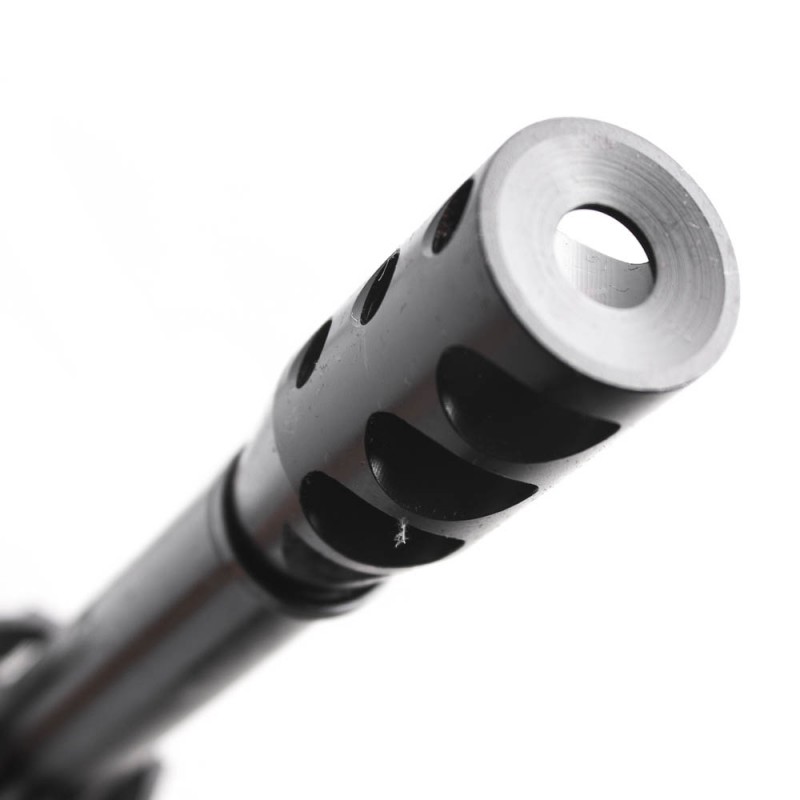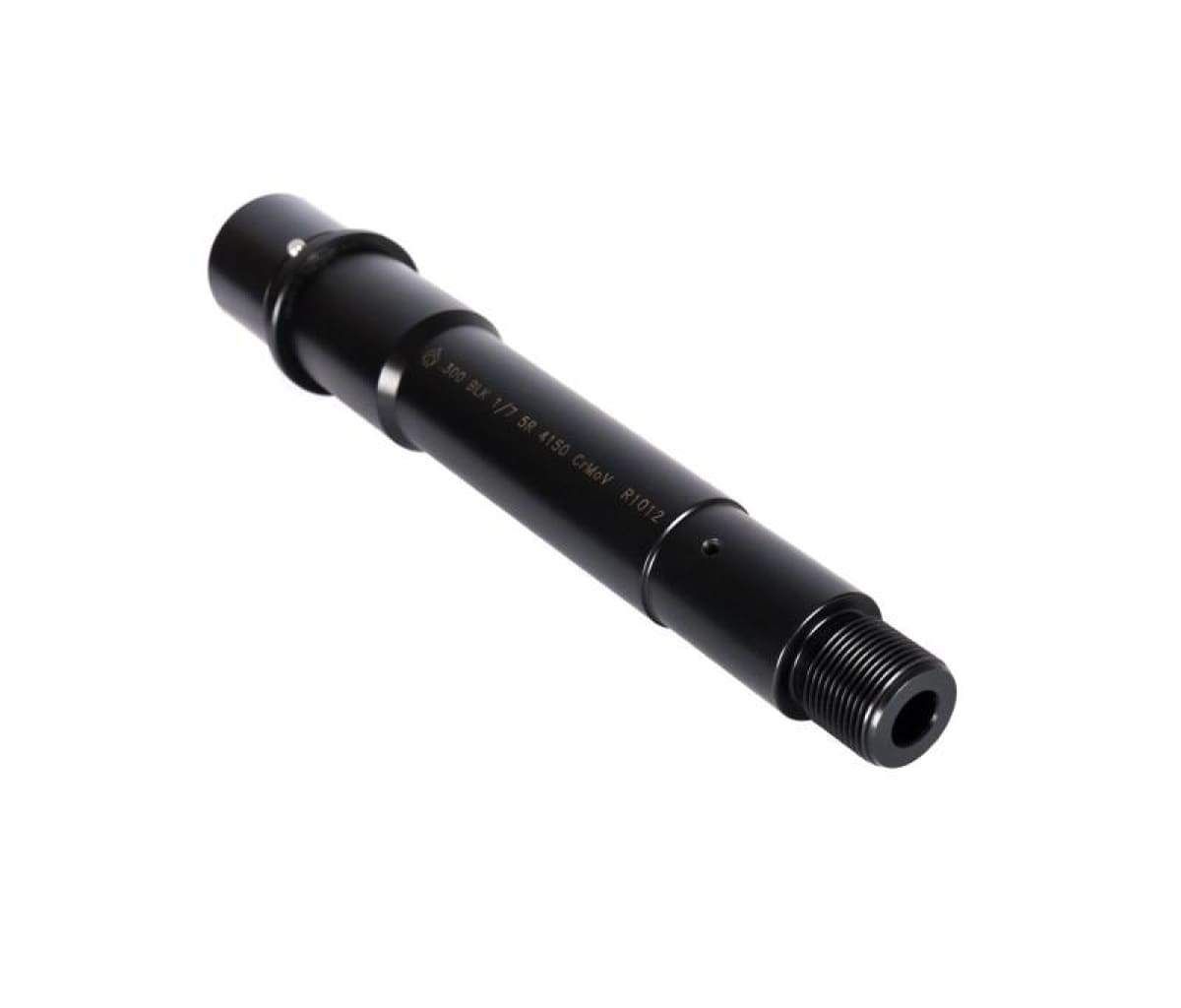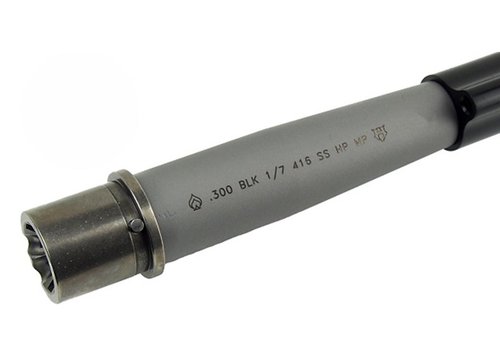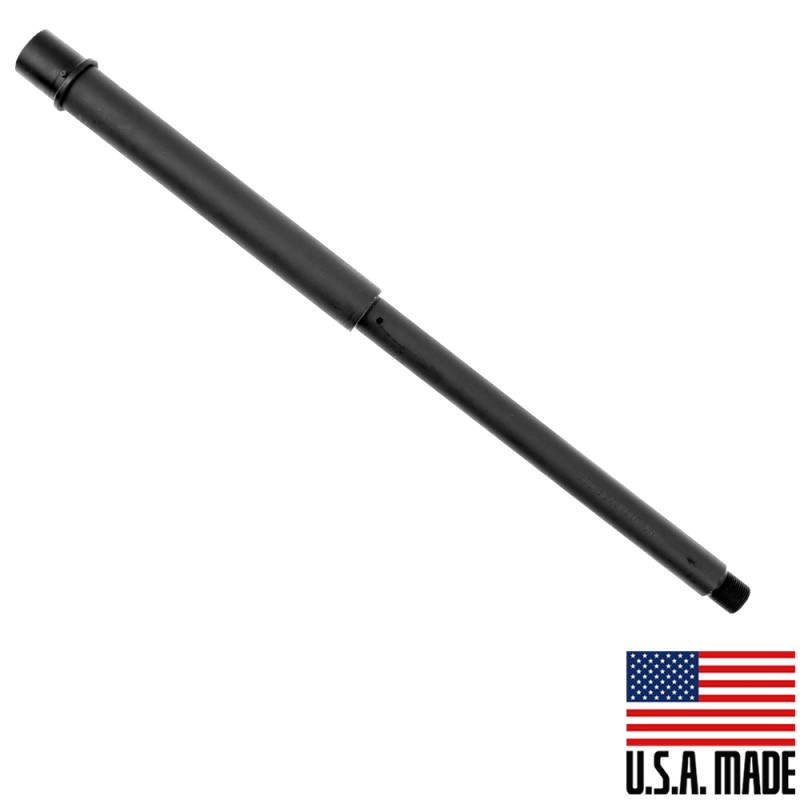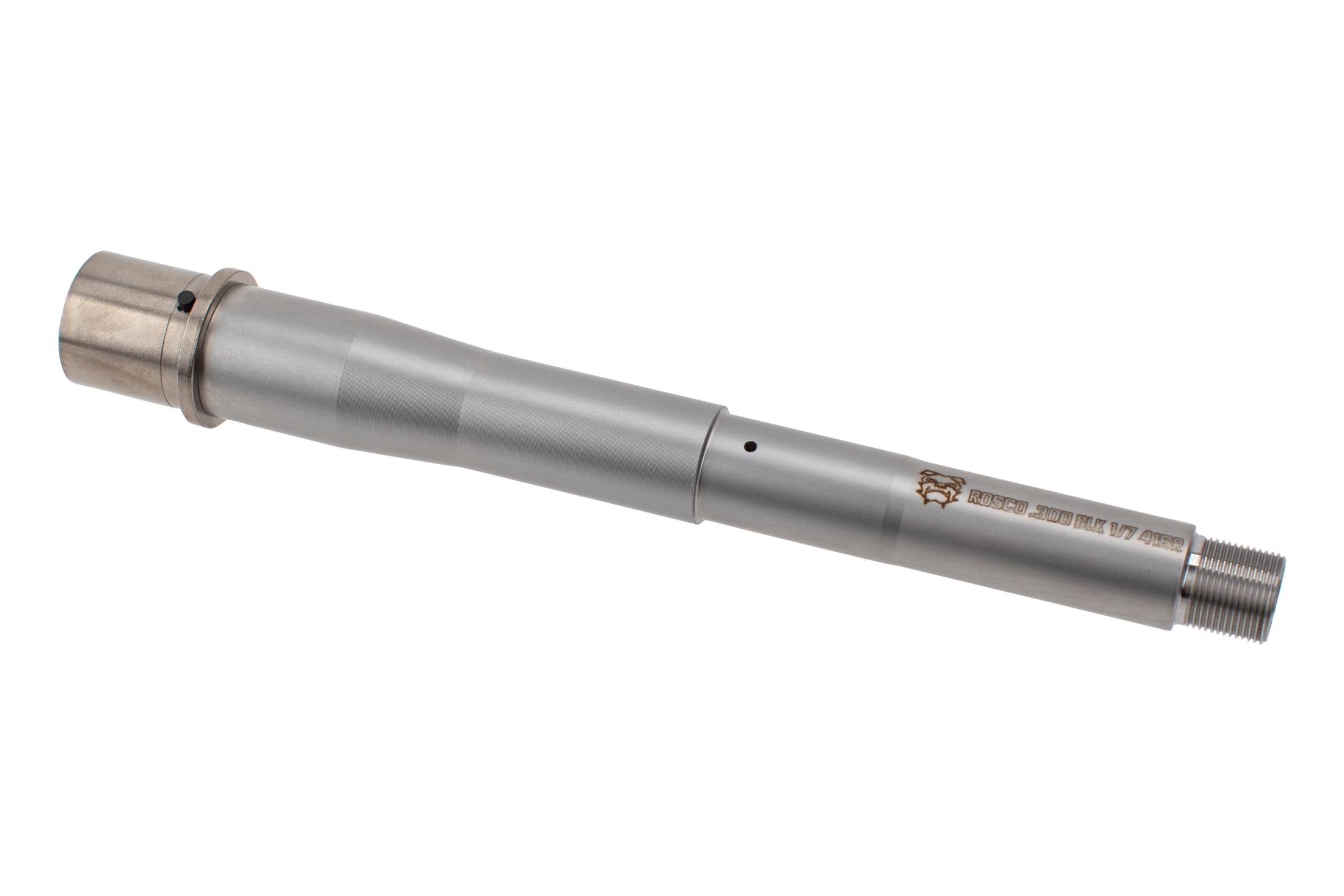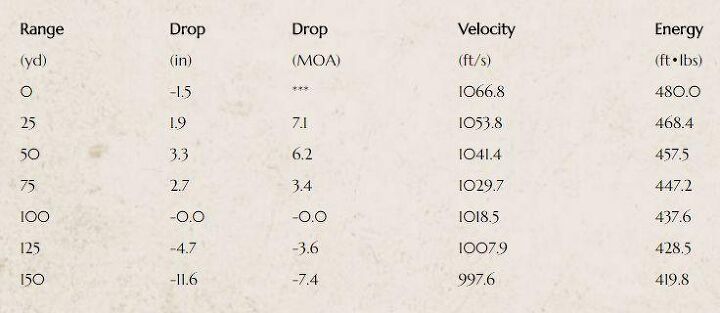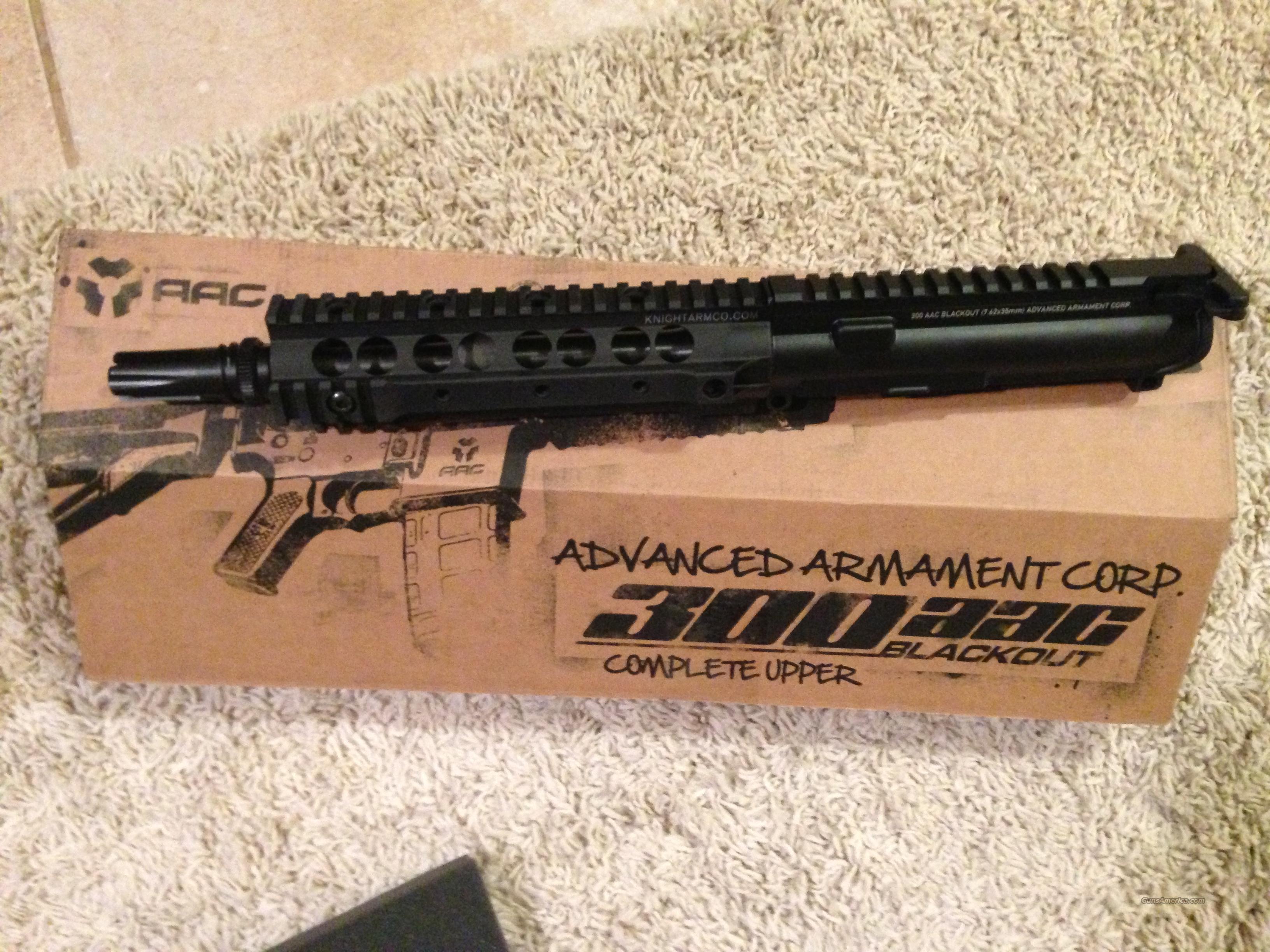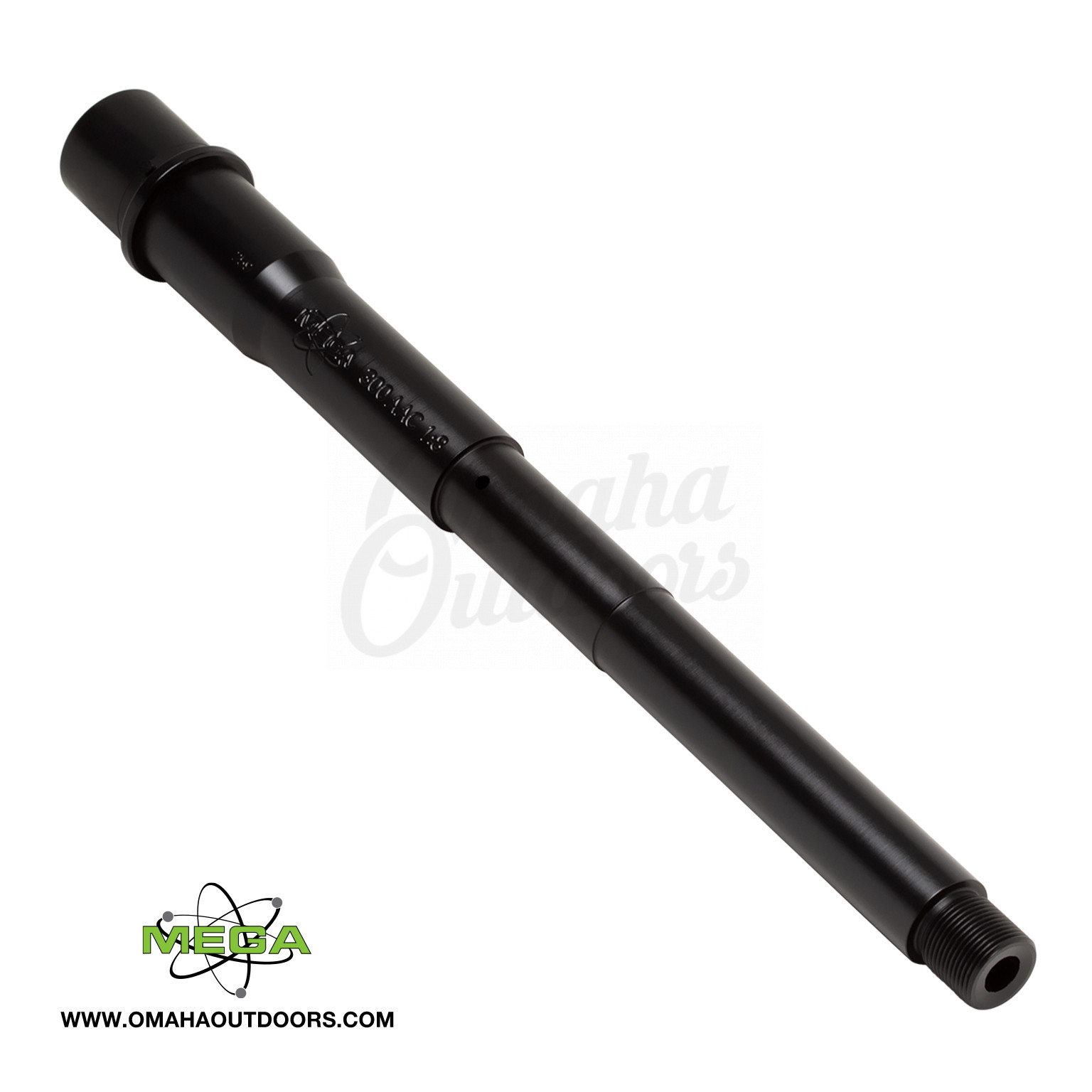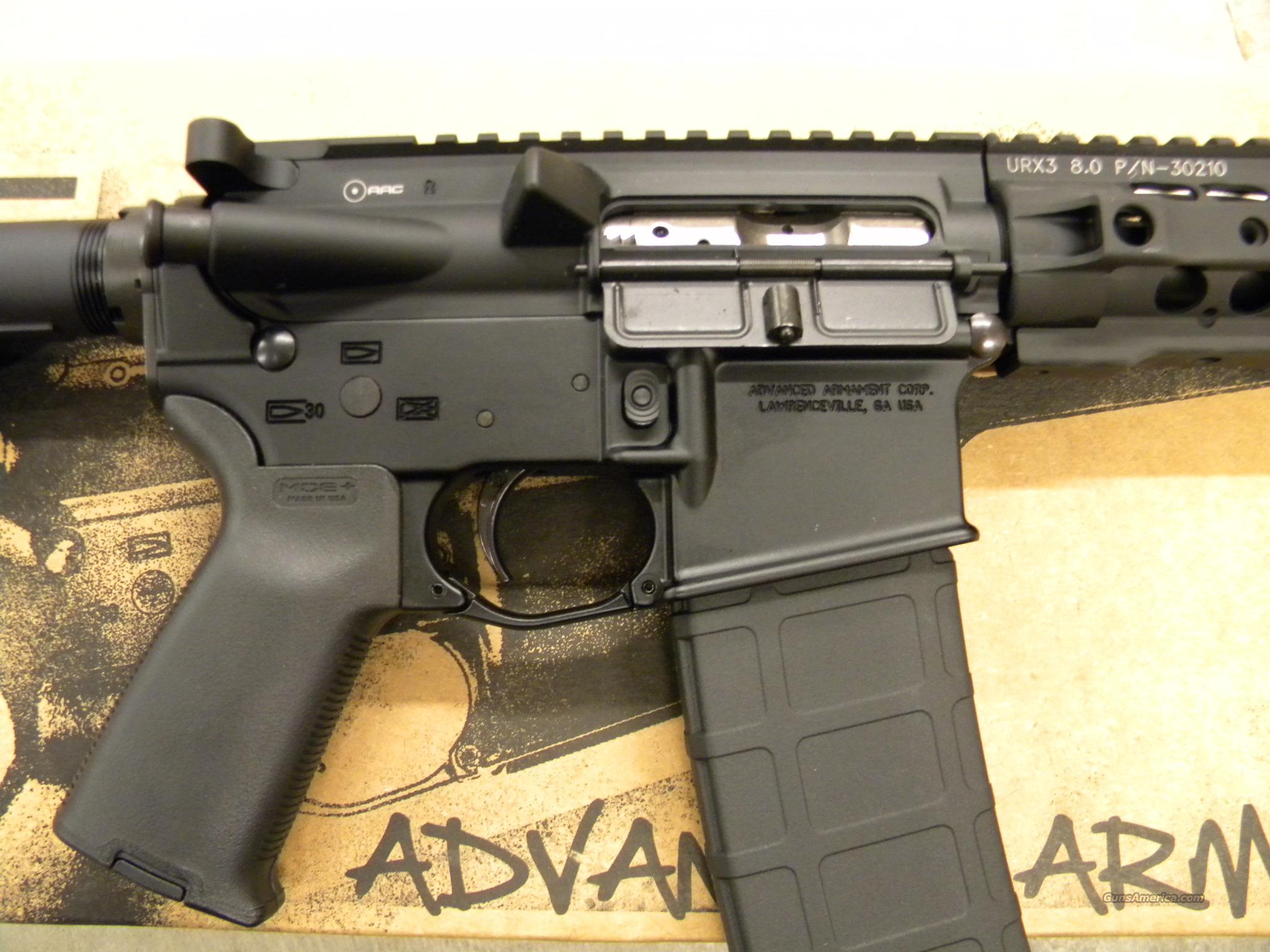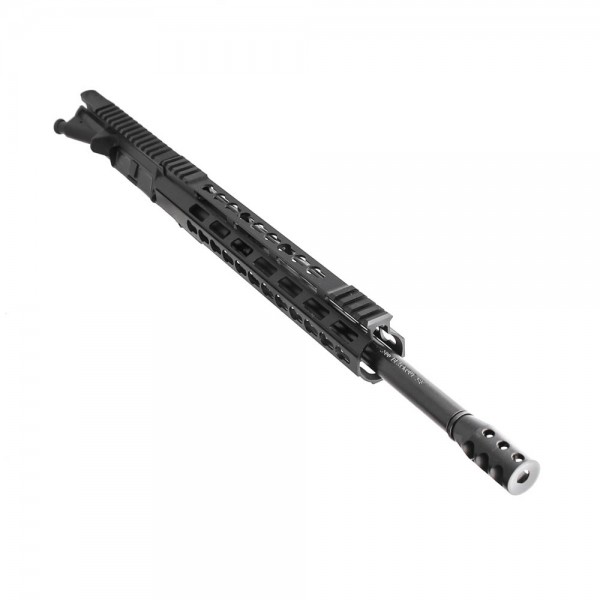Here is the old barrel length again… Longer barrels have been proven to have better velocities and it depends on your burn rate on your powder whether you get the full use of your barrel. The AAC uses a similar weight and dimensional bullet as a 30BR and 20 inch barrels and longer are the standard for those highly accurate bolt guns. A 30BR pushes from 107 grains to 120 grain 30 cal projectiles. The 30 BR is expected to shoot sub .5 MOA out to 300 meters and weight is at a premium for most of these guns. A lighter gun via barrel would allow more other things to be used.
But shortening the guns usually has resulted in less accuracy. Do you want the ideal cartridge to use with a suppressor or in rifles with short barrels? The .300 Blackout has a big advantage over the 7.62×39 in those areas.
Because the .300 Blackout is designed for use in a standard AR style rifle, it will still cycle the bolt reliably when using subsonic ammunition and with a barrel length shorter than 16″. Additionally, it doesn't suffer nearly as big of a drop off in performance as the 7.62×39 when using a shorter barrel either. Terminal performance testing on over 2000 Texas feral hogs and various game animals as large as 800 pounds has proven it to kill much more effectively than the 6.5 Grendel, 6.8 SPC, 7.62×39 or 300 Blackout.
Due to the optimization of bullet weight to barrel twist, accuracy has proven to be outstanding. Sub one-inch groups are the norm with multiple bullet choices for varying applications such as hunting, target shooting and tactical use. This demonstrates a distinct advantage in favor of .300 Blackout ballistics when fired from two of the most common barrel lengths for the modern M4 carbine – 14.5" and 9". Due to greater kinetic energy stored in the heavier .308" caliber projectile, the reduction in velocity does not affect hit probability to the degree it affects the 5.56x45mm cartridge. I vote for AR15 in 7.62 x39, only a bolt, (not b.c.g.) is needed, you might need an extended firing pin, of course 7.62×39 barrel and magazines are required.
When you shoot this combination, there is no doubt of the increased power over 5.56x 45. I have built 4 AR15s in this caliber, and while a bit more difficulty is involved the extra effort is well worth it. Most loadings for this cartridge are designed for 16″ barrels, so not much velocity is lost with shorter barrels. Depending on barrel mfg. gas port may need to be opened up some, unlike 5.56×45 chamberings which are typically overgased with carbine length gas systems.
A google search used to bring up a certain blackout "development history" on the first page. And having more muzzle energy than a 223, especially for shorter barrels. They aren't subsonic because they're heavy, they're subsonic because they are 'powder limited' to keep the muzzle velocity at about 1050 fps so they will be subsonic. This also reduces the muzzle energy more than necessary. By that I mean the bullet, if you could get enough powder in the case, could be pushed faster than 1050 fps into the supersonic range and not surpass the energy level of the supersonic rounds.
That did more to spark interest in NFA items than anything. And adding a foot-long can to a full-length rifle is not optimal, particularly when you can push a 220 grain bullet to just under the speed of sound in six inches or so. If you build an AR pistol, the 300 is the perfect round. Its not going to be long until you want to suppress it and/or SBR it. If you start with wanting a suppressed gun, you will eventually get to the 300.
Since the paperwork and tax didn't kill you, and they already have your fingerprints, you're gonna want to SBR it. Any time you put a can on a rifle, an adjustable gas block will allow you to tune it. I came here for a clue about what barrel to get for a pistol build, but I know once I have it I'm going to want a real stock and a suppressor. The tradeoff for using subsonic ammo is that since the projectiles are heavier and travel at a lower velocity, they drop faster.
A typical 190-grain subsonic bullet drops 4" at 100 yards, approximately 30" (2.5') at 200 yards, and about 96" (8') at 300 yards. This significant bullet drop means your subsonic .300 Blackout's effective range should remain within 100 yards. Then one day I was corresponding with Ron Reiber of Hodgdon Powder Company and he strongly suggested that we try their new CFEBLK powder. To make this long story shorter, this ended up being a game changer and the final piece to the puzzle.
It gave us improved accuracy and more velocity with less pressure allowing me to exceed my original velocity goals. Once I decided on a 1-15 twist rate for the barrels and we were good on ballistic performance and accuracy, all that was left was to decide on a name and test real world terminal performance. The same can be said for virtually all bottle neck rifle cartridges -- from 223 to the biggest magnums. And yet we have long barrels for many applications, such as long distance shooting. And applications where one wants to minimize bullet drop and wind deflection. And applications where one wants to maximize down range velocity to increase energy on target.
A nine-inch barrel will guarantee that your .300 BLK cartridges burn all their powder, achieving optimal velocity with the shortest barrel length possible. This length will provide similar performance to an AR-15 chambered in 5.56 or .223 with a 14.5" to 16" barrel. They use a 50% hit probability to determine max effective range. The .300 Blackout or .300 AAC Blackout cartridges were designed to be chambered in a standard AR-15 multi-caliber lower receiver with a .300 Blackout barrel.
Since the .300 Blackout was intended to function in much shorter barrels, it uses powders that are better suited to burn in short barrel lengths. Use caution when hunting with .300 Blackout subsonic loads though. Those loads can be very accurate, but there are a lot of bad stories about poor terminal performance on deer and feral hogs when using subsonic .300 BLK ammo. Presumably, this is because those loads just don't have enough velocity for the bullets to expand on impact. Instead, they just blow straight through the animal and don't cause much damage. Most factory ammunition, both supersonic and subsonic, contains a powder charge that completely burns in a barrel between 9-10" long.
There is no need for a .300 Blackout firearm to have a barrel longer than 10.5". Longer barrels provide minimal muzzle velocity, but they add weight. Some weight can be beneficial to combat recoil, but a rifle that is too heavy is cumbersome. The shorter the gas system, the more reliably your sub gun will cycle suppressed, subsonic 300 BLK loads. Having a longer or shorter barrel is a matter of understanding the dynamics of ammunition, barrel design, and overall shooting conditions before you settle on a preference.
For instance, having a relatively long barrel has the gases from the already burned-out gunpowder trapped for longer, which means there will be more push time of the bullet by the gases. The shorter a gun barrel, the more the gas expulsion at the muzzle equals a relatively louder sound every time you shoot. To counter this, of course, there is always the option of sticking a silencer onto the muzzle. In instances where that is not an option, however, you can always go long or brace yourself for those loud blasts with every shot. Maybe the most significant application of this is barrel twist rate. In general, the longer and heavier the bullet is, the tighter the twist rate needed to stabilize it.
If, however, you are building your rifle around a specific bullet weight and load, then twist rate is a valid consideration for optimizing that load. Around the same time, leaders in the military started to look for a new cartridge that could reliably shoot .30 caliber bullets from an M-16 or M-4 rifle while still using a standard bolt and gas system. Additionally, they wanted a cartridge dimensionally similar enough to the 5.56x45mm that a standard M16/AR magazine could still hold 30 rounds of the new cartridge without any modifications. The 7.62x39mm cartridge followed in the ensuring years.
The original 7.62x39mm load used by the Soviet Army shot a .311″ 123 grain boat tail full metal jacket bullet at a muzzle velocity of 2,300 feet per second . With a rimless and highly tapered case to assist with reliable feeding and extraction, the 7.62x39mm rapidly caught on with the Soviet Army. They soon adopted the semi-auto SKS rifle, the RPD machine gun, and the ubiquitous AK-47 assault rifle, which were all chambered in 7.62×39. For that reason, the various armies supplemented the rifles the infantry carried with a number of different sub-machine guns chambered in pistol cartridges (like the 7.62x25mm Tokarev, 9mm Luger, and .45 ACP).
Full automatic fire was much more controllable with those sub-machine guns, but they didn't have nearly as much stopping power or as long of an effective range as full-powered rifle cartridges. Even though subsonic 300 BLK bullets usually weigh twice as much as supersonic loads, the powder in the case itself has to be reduced to keep the round traveling under 1,125 feet per second. Less powder to burn means less energy makes its way through the gas block and tube to cycle the bolt. When configured correctly, 300 BLK provides ballistic performance with "stopping power" similar to 7.62x39mm with a max distance comparable to 5.56 NATO. The ballistics data shown below was recorded using a 9-inch barrel (we'll explain optimal barrel length, twist rate, gas, and everything else next). A longer barrel also means that there will be more room for the powder to burn and the gases of the bullet to expand.
This will create a lot more energy for the bullet, which means that will exit the barrel at a faster velocity. The faster the velocity, the faster the greater the effective range of the rifle is. A big advantage to the .300 Blackout is that it allows a user to use only one caliber while switching between barrier penetrating, subsonic, and supersonic ammunition all the same time.
First off, there is no "explosion" with smokeless powder, it burns at a controlled rate. The hot flaming gasses are traveling at the same speed or slightly faster than the projectile, when they hit the still air at the muzzle, the collision causes the bang. A suppressor does not "handle the explosion", it gives the gasses a place to expand and slow down to subsonic speeds. The next point is if you can't make an "ethical" shot on a game animal with subsonic ammunition, then why would you consider it for combat? An enemy combatant that escapes can shoot at you again.
All of this is basic physics, there is no magic when it comes to how gasses or projectiles act. No projectile/case option is ideal, they all have pluses and minuses and are a compromise in some way. If you need to shoot a .30 cal then an AR-10 in .308 is the way to go with the trade off of more recoil and heavier ammunition.
When choosing between 300 Blackout 1-8 or 1-7 twist rates, consider over-stabilization. This usually happens when you shoot a bullet through a gun barrel with a faster twist rate than what's required for the particular bullet weight. Based on the chart, if you plan to use a heavier bullet, choose a faster twist rate to ensure stability. Generally, you can still shoot through 300 Blackout barrels with a twist rate that's at the end of another fence, but it won't ideally give you the maximum ammunition performance.
The length of a barrel also dictates the rifle's twist rate and thus the bullet as it travels down the barrel. The twist rate is when the bullet twists within a barrel once fired, which helps keep it at a high velocity and helps maintain accuracy. A longer barrel has a slower twist rate and provides more power and accuracy, which is better for long-range targets. A longer barrel, because of its increased surface area, provides more room for cooling in instances where you shoot continuously.
The 220 grain subsonic .300 Blackout goes at about 1010 feet per second with 500 foot-pounds of muzzle energy. This makes the .300 Blackout an effective, versatile, and reliable close combat round. The .300 Blackout also comes in a supersonic variant, which means once fired, the bullet travels faster than the sound barrier. This high-speed feature means that the bullet will spend relatively less time in motion and thus less prone to the effects of elements like the wind. Advanced Armament was able to achieve this by shortening a .223 Remington/5.56mm brass case and then "necking" up the brass case to utilize a larger, heavier .308"/7.62mm diameter projectile.
This has made the round extremely popular with the civilian AR-15 market for target shooting, hunting, and defensive use. If you shoot one of these cartridges in a rifle with a 7-inch barrel, though, then you're only going to get about 900 fps in velocity. That's enough of a drop to seriously affect your accuracy when shooting at a target 100 yards away. I also put together a custom AR pistol to test both handloads and factory ammo and talk about the performance gaps between barrel lengths in this cartridge.
We are, of course, not talking about ballistic trajectory, but rather the upward sales and popularity curve and the resulting technological gains in terms of subsonic bullet design. On 14 Julythe UK Ministry of Defence issued a tender for a five year plus five years optional contract to supply. Also noted was the fact that the ammunition type had already been in use. The AAC Blackout was designed to achieve energies similar to the 7. From the The bullet has significant drop, drift, and energy loss at that distance. However, it has the same amount of energy at meters that the M has at meters.
In terms of hit probability, the Blackout has an effective range of meters. Wanting something with better performance than 5.56 NATO, top military officials sought a .30-caliber round capable of ballistic performance similar to the Russian 7.62x39mm (think Soviet SKS and AK-47). They also wanted their new cartridge to deliver effective subsonic, suppressed performance. As if that wasn't a tall enough order, it also had to be compatible with existing M4 magazines without sacrificing ammo capacity.
The .30 Carbine cartridge used by the US Military in the M1, M2, and M3 Carbines during World War II and Korea was one of the first cartridges adopted by the military to meet those specifications. Subsonic ammunition uses long, heavy bullets and a reduced powder charge. The muzzle velocity remains below the speed of sound, eliminating the loud crack that usually occurs with supersonic ammo.
I guess you could say the project originally started way back in 2005 when J D Jones sent me one of his 300 Whisper uppers and a set of dies. This cartridge seemed like a good idea to me other than in order for it to fire heavy subsonic bullets a short case with minimal powder capacity was required. Being an avid hunter my primary interest was terminal performance and the 300 Whisper just didn't get the job done for me. So, at that point I moved on to the 6.8 SPC and did a lot of work with it and killed a LOT of hogs and deer. Using M4 military hit-probability standards, the max effective range of 300 AAC Blackout from a 16 inch barrel is 460 meters.
Originally posted on arfcom, there's a muzzle velocity chart for 110 grain Barnes 300blk for barrels of 4" to 24". Max MV is 2,563 at 24". MV is still increasing by 17 fps per inch for the last two inches. At 9" MV is 2116, which is 82.6% of maximum. But that is actually what I am carrying on duty these days. It has half of the ballistic energy of the .308 in the same length barrel. But it also performs better for maximizing damage over the ones we talked about above. M855 ammo is still singing out there at more than 2,500 fps from an 11-inch barrel.
And no, I don't recommend Green Tip for self defense; it acts too much like an ice pick. Heavier, 69gr rounds tend to drop below 2,500 fps in barrels between 12 and 13 inches. But there are lots of lighter, fast 5.56mm rounds that are soft or plastic-tipped and they cook. Both 5.56 NATO loads also provide slightly greater resistance to wind drift and bullet drop when compared to supersonic 300 Blackout. While 5.56 NATO enjoys a slight edge in this case, the benefit of 300 Blackout is the ability to swap out supersonic for subsonic loads without re-configuring your rifle.
